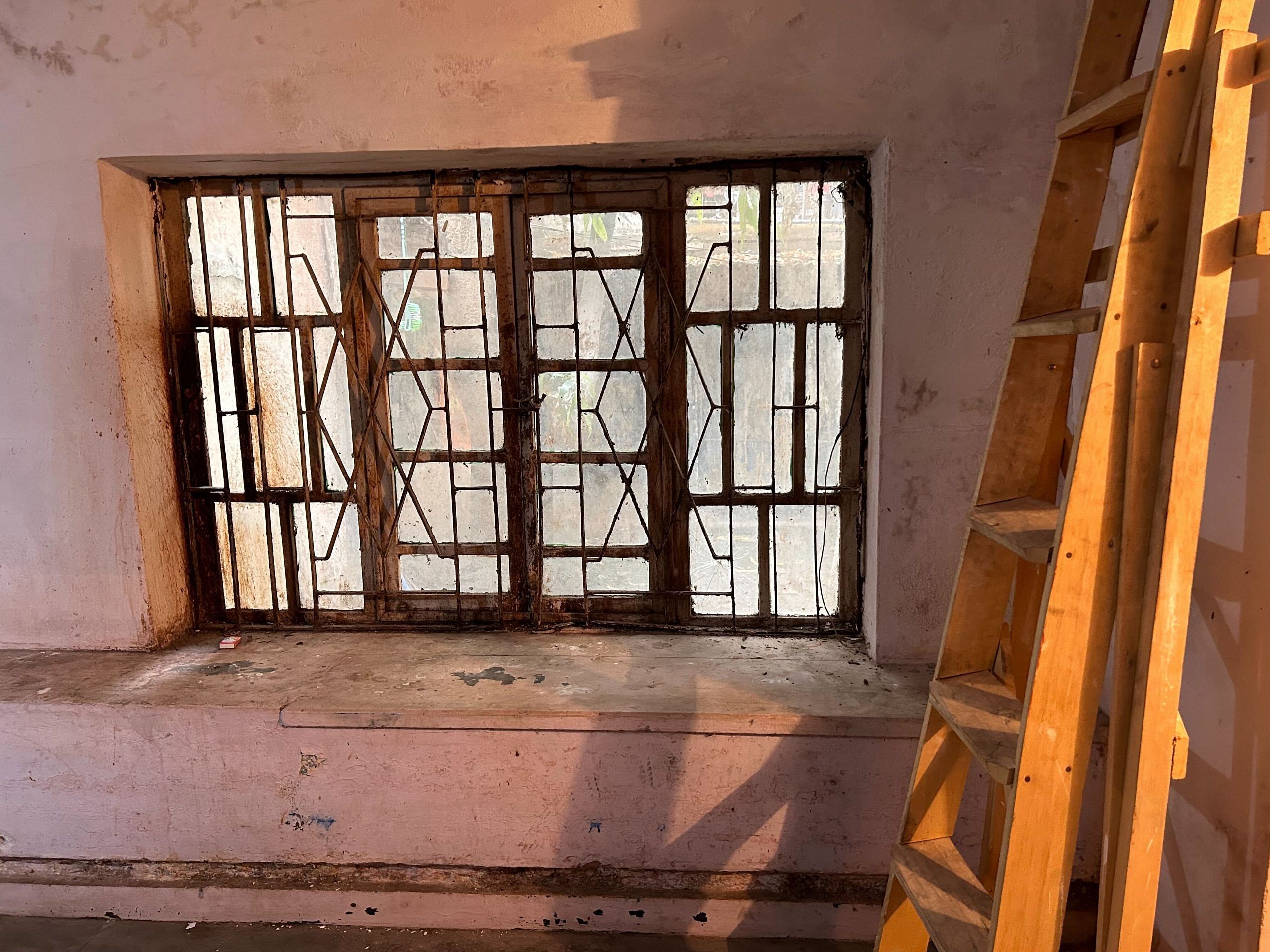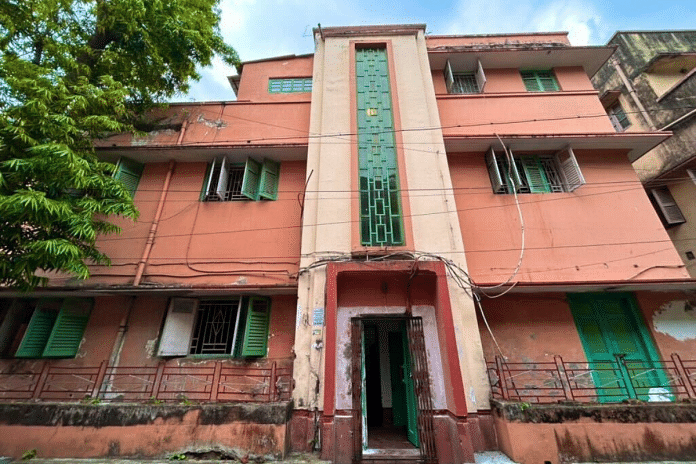Kolkata: Renowned Bengali painter Jamini Roy’s last wish was that his studio remain untouched after his death. The 75-year-old structure, where Roy painted at leisure under a mango tree that still guards the garden around the studio in Ballygunge, a posh South Kolkata neighbourhood, is now being turned into India’s first private single-artist museum. Roy had moved here from North Kolkata’s Bagbazar in 1949 and set up his place in one of the quaint bylanes circling sprawling bungalows owned by professionals and elites.

Acquired by DAG, a renowned art company, the museum will open the doors to Jamini Roy’s world. A one-of-a-kind experience where one submerges in the art, architecture, and life of the iconic Bengali artist often regarded as the father of modern Indian art.
A 75-year-old legacy
Speaking to ThePrint, Roy’s great-granddaughter Arkamitra said that their prayers were answered when DAG said it wanted to acquire the property for restoration. “The house is fairly large and impossible to be maintained by elderly people anymore. No one (Roy’s close relations) wanted to give it up for redevelopment and bulldoze the memories in the house. We wanted to sell it and DAG approached us. We jumped at it because it was the answer to our collective prayers,” she says.
ThePrint got a glimpse of Roy’s house, which was visited by Rabindranath Tagore, Sarojini Naidu, Indira Gandhi along with Rajiv and Sanjay Gandhi, former West Bengal CMs Siddhartha Shankar Roy, Jyoti Basu, Buddhadeb Bhattacharya, and several renowned people from across India. With a glass-panelled staircase, big rooms, and open windows, the house is a treasure trove designed by Jamini Roy himself.
The legacy of Jamini Roy is derived from his ability to give a touch of modernism to traditional Bengali art. The artist would create masterpieces with just a few brushstrokes. “You can hardly imagine Indian modernism without the role Jamini Roy played in directing our attention to our own traditions. Not only did he create interest in modern Indian art, but he also empowered generations of artists through his work and remains a source of inspiration,” said Kishore Singh, senior vice-president of DAG.
Also read: Hunkaro isn’t an easy play. Migrant workers’ long walk home wasn’t either
The blueprint is set
The DAG will put on display archival artefacts such as Roy’s painting tools, desk, and materials he used. His original artwork will also be put up in his studio, just the way it was kept during his time. The house’s original blueprint, which is with the DAG, will help restore Roy’s version.

“He kept the windows low as he would sit on the floor and paint. He never hung his artwork on the wall. It would always be kept against the wall on the floor. There were two separate entrances to his home, one for his family and one was a public way. The ground floor was his studio; anyone could walk in and see his paintings and interact with him,” said Sumona Chakravarty, Director, Museums, DAG, while walking ThePrint through the house. “In fact, he designed the house with his son Amiyo Roy, fondly called potol. The family handed over the house in the last week of March and shifted to Delhi.”
Roy was awarded the Viceroy’s gold medal in 1935, the Padma Bhushan in 1955, and was elected a fellow of the Lalit Kala Akademi in 1956. Declared a National Treasure artist in 1976, his works cannot be exported. He died on 24 April 1972, after which a bank rented out the first floor of the house.
“If you see the walls, several windows were cemented, the flooring was changed, air conditioners installed to facilitate a bank here. Interestingly, if you put the address on google maps, it throws a bank as the location. We hope to restore the old layout and erase the bank from the first floor,” said Sumona.
The irony is, Jamini Roy himself never trusted his money with a bank. “All his life, he kept all his money in small almirahs in his room. And he kept money in a small cloth bag. When it used to tear up, he used to get his daughter-in-law Reba Roy to mend it. No one was allowed to touch it,” said Arkamitra.
Like his art, Jamini kept his house traditional yet gave it a modern touch. The minimalism of Shantiniketan, with the iconic red cement flooring, wooden window panes, open rooms with functionalities like separate passageways for his sons’ families, a separate room for the house help, and a prayer room.
The right modern touch
DAG is currently looking for architects to work on the project. Once restored, the house will have Jamini’s artwork on the ground floor, possibly a rotational art exhibition on the second floor, an art store, a café, and a space for workshops to draw the crowd. “The house has lovely open spaces. An outdoor performing area with a café on the side would create a perfect ambience,” exclaimed Sumona as we stood on the terrace.
CV Rao, 72, who resides in the house opposite Roy’s, recalled he was only seven years old when he saw Jamini painting in his studio. “I used to run into his home with my drawings and he would remark ‘Good job’ and tell me to keep experimenting. He wouldn’t ever instruct, he would let me imagine my own art. Sometimes, he would warn my father, scold me and [say] that I have become very naughty,” said Rao.
As we stood on Rao’s balcony, we saw how Jamini’s magnificent house stood out among the swanky new flats. Rao wishes he could recall more stories but his memory gave up on him. “They were a simple family. In fact, the colour of the house outside has been maintained, it was slightly darker pink during his days. VIPs would come into his house as he mixed colours to get the right tone for his art,” recalled Rao. He was delighted to know that soon, the house will be a museum and open for public viewing.
Today, several decades later, Jamini Roy’s art still stands tall in Bengalis’ daily lives — from metro station wall art to designs on handloom sarees. His iconic lady with long-drawn eyes in a traditionally draped Bengali saree is part of West Bengal’s rich heritage. By the end of 2024, DAG hopes to complete the project.
(Edited by Humra Laeeq)






